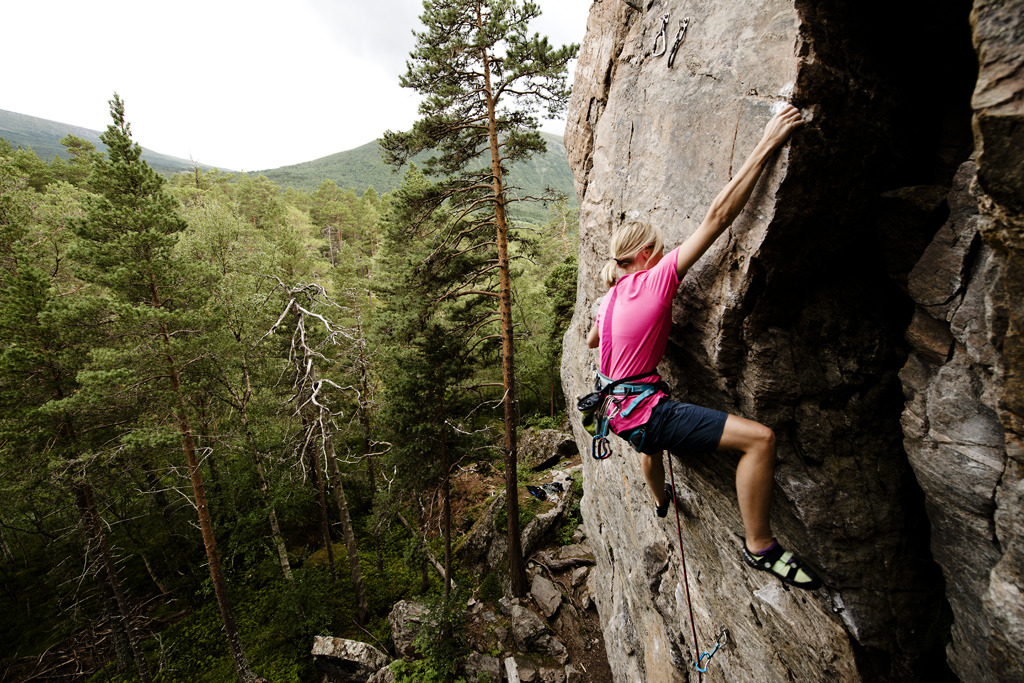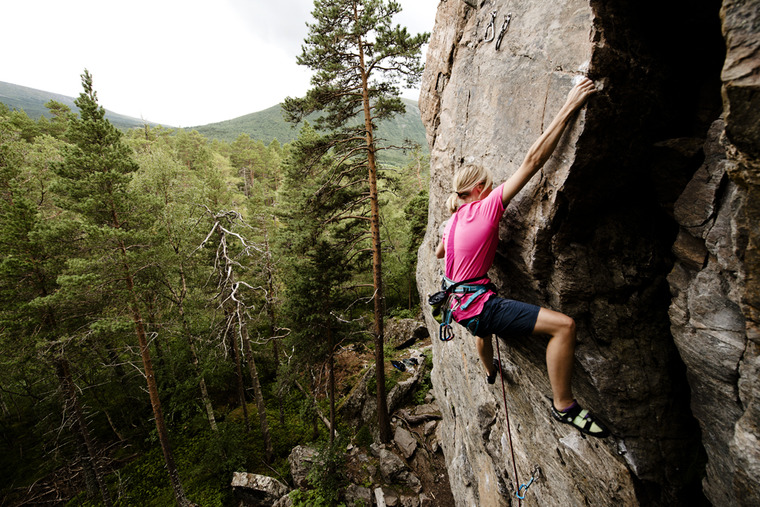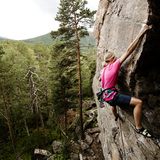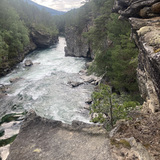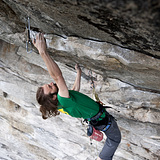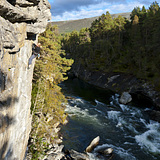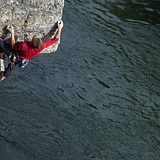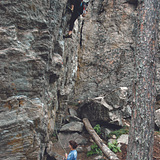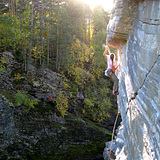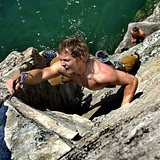Ishoel is the crag that was developed first in Oppdal, and is also the one that is used the most. The area is easily accessible and dries up quickly. The season usually starts at Easter and often lasts until the ice and snow arrives in October. Most of the sectors are located in the river gorge, and have surprisingly easy access. The exception is the Øvre sector, which lies away from the rive. It is also the only child friendly sector, and free from river-noise.
With the exception of the Øvre sector, the climbing is on river-sanded gneiss. The rock is highly featured, skin friendly and you will encounter holds of all types. The routes vary in length from 6-15m, and with a few honorable exceptions, all the routes are (well) bolted. At Ishoel you will find quality routes of all grades up to 8a+.
Here is some information about all the different sectors.
Nerhol:
The newest sector developed at Ishoel (2010) and perhaps the coolest. The routes are steep and brutal, often with distinct cruxes. The sector is located down by the river, and can be difficult to find.
Gryta:
Steep sector in a river-polished "pot". This sector has only three routes and faces away from the river, so there is rarely any sun here. It often takes some time for it to dry up after rain.
Vika:
Vika is located right next to the bridge at Ishoel. There are several lines here, but most are winter routes. However, the marked line through the large overhang (Tjukken M9-) is also a nice sport climbing route. There are also two routes directly under the bridge. The short route is 7- and the long steep one is an unfinished project
Kortveggen:
This short sector is 7-9 meters high and offers short but fun routes. If there is a lot of water in the river, the belay shelf disappears on these routes. Most routes only have two bolts at the top, but it is easy to grab the equipment from the top when you have finished your session.
Grösser:
The big top rope classic, well suited for beginners. The route is also nice to climb on gear. The sector is easily recognizable from the camp spot
Mygghælvet:
One of the largest sectors on Ishoel also offers some of the nicest routes. The cliff is 10-15m high, and mostly offers vertical and slightly overhanging climbing. The main wall is usually dry all year round (routes 8-11), while some of the other routes are wet in the spring.
Litjhælvet:
This sector is mostly dry all year round, so the climbing season often starts here in the spring. The wall has many relatively easy routes, and it is very easy to rig top ropes. The belay shelf from route 1-12 is comfortable, while routes 13-15 are somewhat more exposed. It is possible to go unsecured from route 12 to 13, but there is an advantage with security. You must also have self-anchoring when climbing these routes. Stand is bolted. The wall is 6-10m high and provides nice and sustained climbing, but bears a slight impression that too many routes have been squeezed in, so that the routes in some cases run into each other. There is easy climbing down to the stand shelf, and it is common to go unsecured.
Litj-litjhælvet:
Small sector that is not used that much. However, the routes are nice, and well worth a visit. The wall is around 10m high with intensive and steep routes.
Øvre:
Øvre was discovered in the spring of 2003. Hungry for new routes, the first route was bolted on the same day as the wall was found. The routes on Øvre maintain a consistently high quality and are from 10-15m tall. The sector is divided into three, with around 50m between each sector. The left part is definitely the highest class, and is used the most. All the Øvre-sectors do not have disturbing noise from the river, and are child-friendly. NB! It's a good idea to bring mosquito spray!
